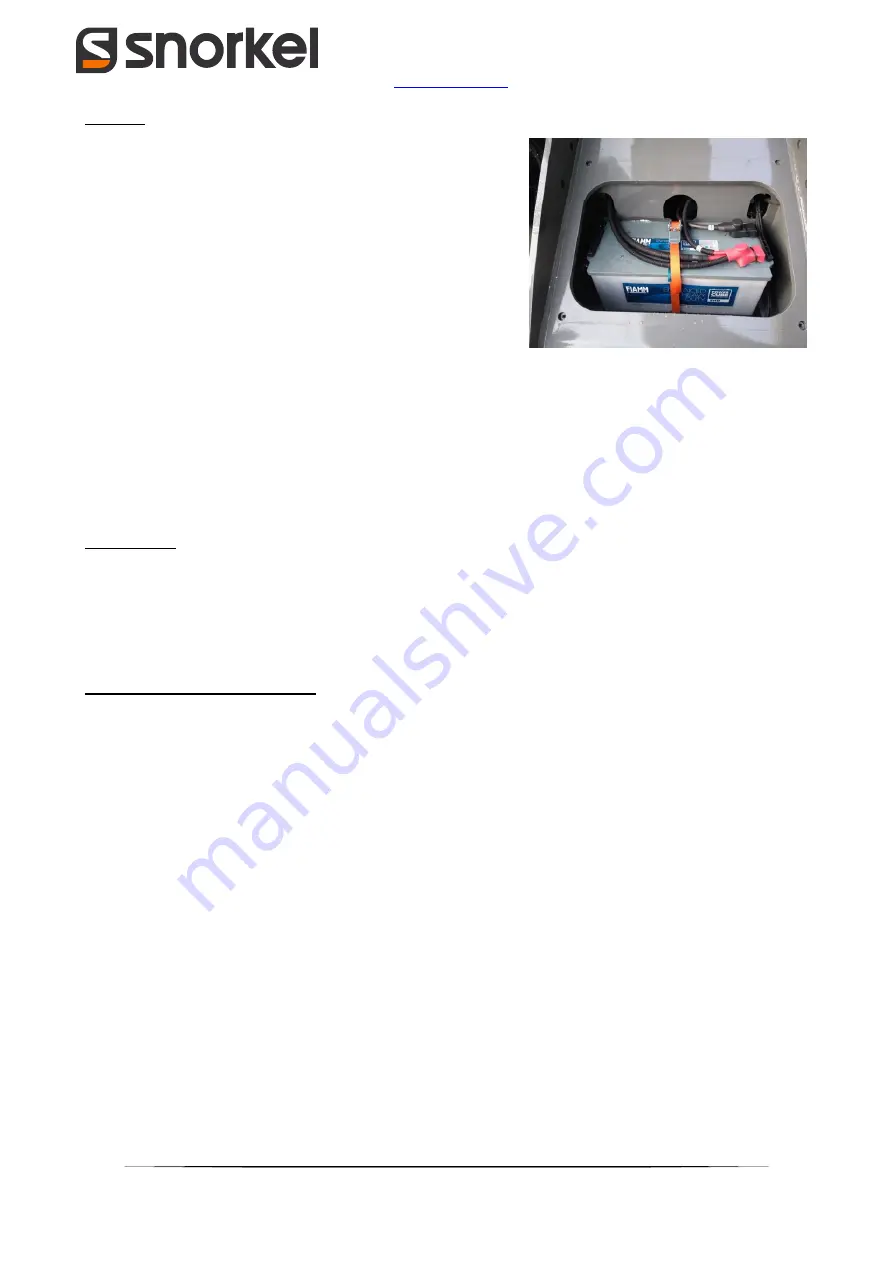
125
Snorkel International, LLC
2009 Roseport Road
Elwood, KS 66024
Model: Snorkel SR5719
Part Number: 159-0074-000
Version: Stage 5 / Open Cab
Charging
If a flat battery needs to be re-invigorated after extended non-
use, involuntary discharge or due to malfunctions in the
machine charging system, either contact a specialised workshop
or proceed yourself by following a few simple precautions to
protect your own safety and the integrity of the battery.
Working in a well-ventilated, covered area far from flames and
sparks, remove the battery from the machine by loosening the
terminals under the plastic protections (see battery
replacement procedure below) and connect the battery poles
to the respective charger terminals, supplying the battery with a maximum current corresponding to 10%
of the nominal capacity, opting for slow charging, for about 10 hours or until the absorbed current is
reduced to just a few milliamps and the voltage is about 13.5 V. It is not recommended to use higher
currents or fast charging, which may accelerate the plate sulphation process.
The charging operations and battery maintenance can be carried out calmly, in accordance with the basic
safety standards, using fully automatic battery chargers, which can provide current according to the
nominal capacity and start full charge maintenance once the charging process is completed.
Maintenance
If the battery is to be stored and not used for long periods of time, in order to maintain its efficiency and
charge unaltered over time, it can be connected to a charge maintainer without necessarily removing it
from the machine. The charge is maintained by supplying a current to the battery at a constant voltage of a
few milliamps for the entire period of non-use.
Start-up using an external battery
If the machine needs to be started using an external battery, exercise particular caution in order to avoid
sometimes very serious risks. Do not perform this procedure unless you have full knowledge of the
activities that need to be carried out.
Use only batteries of the same voltage and capacity (or greater capacity).
STRICTLY avoid accidental contact between opposite poles when connecting the cables in order to prevent
sparks, priming of flames or explosions.
The cables must be suitable for the purpose and not worn so as to minimise the resistance.
Proceed as follows:
1.
"Donor" machine engine off
2.
Uncover the plastic protective parts of the poles of both batteries (the "donor" and "receiver")
3.
Interconnect the positive poles of the two batteries (+ with + // with the red cable)
4.
Interconnect the negative poles of the two batteries (- with - // with the black cable)
5.
Start-up the engine of the "donor" machine and allow it to reach a medium/high speed
6.
Start-up the engine of the "receiving" machine
7.
With the "receiving" machine started up, first disconnect the negative cable (black/ - with -) and
then the positive (red/ + with +), first disconnecting the pole of the "donor" battery and then that
of the "receiving" battery for both cables.
8.
Replace the plastic protective parts on the poles of both batteries
Summary of Contents for SR5719
Page 159: ......
















































